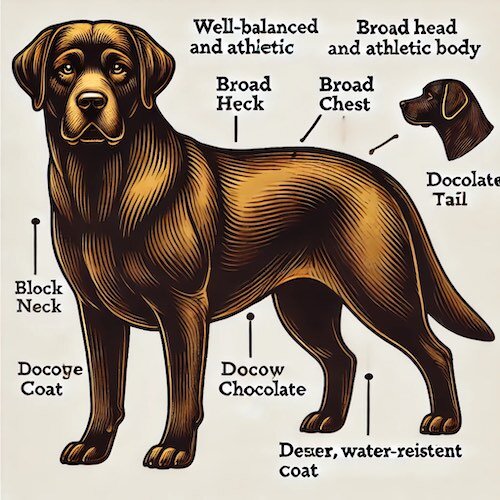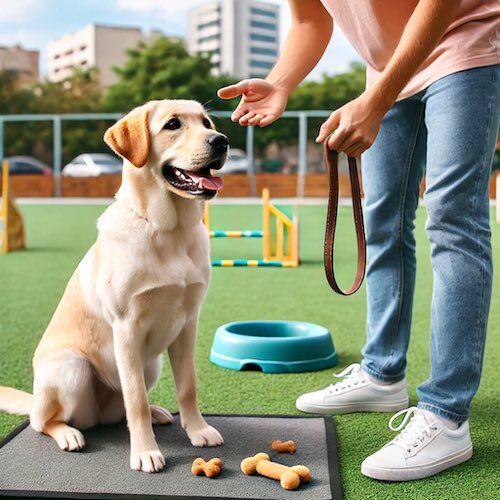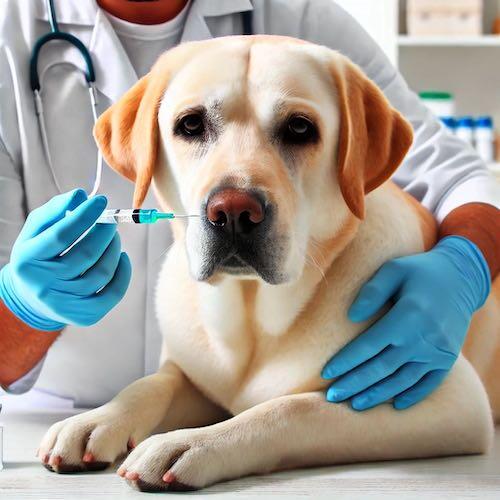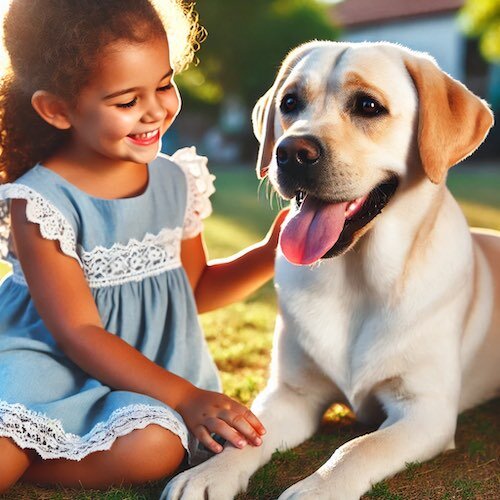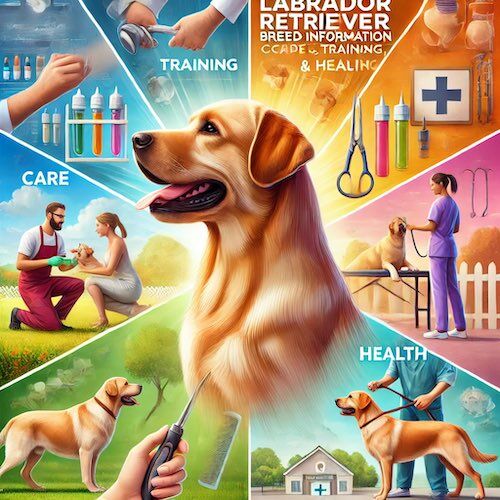
Labrador Retriever Breed Information: The Complete Guide to Care, Training, and Health
1. Introduction to Labrador Retrievers
Overview
Labrador Retrievers, affectionately known as Labs, hold a special place in the hearts of dog lovers worldwide. Their appeal lies not only in their friendly and approachable demeanor but also in their remarkable versatility. Labs excel in various roles, from loyal family companions to diligent working dogs in service and rescue missions. This ultimate guide delves into every aspect of the breed, providing a thorough understanding of what makes Labrador Retrievers so unique and beloved.
Search Best Labrador Retriever Products Online Here
Labrador Retrievers have consistently ranked as one of the most popular dog breeds in many countries, particularly in the United States, Canada, and the United Kingdom. Their popularity is a testament to their adaptability and the numerous roles they can play in human society. Whether you are considering bringing a Lab into your home or are simply interested in learning more about this remarkable breed, this guide will offer valuable insights and practical advice.
History and Origins
The Labrador Retriever’s journey began on the rugged shores of Newfoundland, Canada, where they were originally known as St. John’s dogs or Lesser Newfoundland dogs. These early Labs were indispensable to local fishermen, assisting them in retrieving fishing nets, hauling ropes, and catching fish that slipped out of the nets. Their hardworking nature and strong swimming ability made them ideal companions for the demanding life at sea.
In the early 19th century, the breed caught the attention of visiting English nobles, who were impressed by their working capabilities and friendly disposition. They began importing these dogs to England, where British breeders refined and standardized the breed. The modern Labrador Retriever emerged through careful breeding, focusing on traits such as a strong build, a dense water-resistant coat, and an even temperament.
The breed’s name, “Labrador,” is believed to have been inspired by the Labrador Sea, despite their origins being rooted in Newfoundland. Over time, Labs gained recognition not only for their utility in hunting and retrieving but also for their suitability as family pets and working dogs. Their official recognition by major kennel clubs in the early 20th century cemented their status as a distinct and beloved breed.
2. Physical Characteristics
Size and Weight
Labrador Retrievers are robust and well-built dogs, known for their athletic and sturdy physique. Males typically stand between 22.5 to 24.5 inches at the shoulder and weigh between 65 to 80 pounds. Females are slightly smaller, standing between 21.5 to 23.5 inches tall and weighing 55 to 70 pounds. This size difference is subtle, but it can be noticeable in well-bred individuals.
Their muscular build and strong frame are complemented by a deep chest and a broad head. Labs have a distinctive “otter” tail, which is thick at the base and tapers to a point. This tail acts as a powerful rudder when they swim, aiding in their impressive swimming abilities.
Coat and Color
Labrador Retrievers are known for their distinctive double coat, which consists of a dense, water-resistant undercoat and a short, straight, weather-resistant topcoat. This coat provides excellent protection against the elements, making Labs well-suited for various outdoor activities, including swimming and hunting in wet conditions.
Labs come in three standard colors: black, yellow, and chocolate. Black Labs are the most common, but yellow and chocolate Labs are equally cherished. The yellow color can range from pale cream to a rich, fox-red shade. Chocolate Labs vary from light to dark brown. Regardless of their color, all Labs share the same endearing qualities and versatility.
It’s worth noting that while the breed standard recognizes these three colors, other variations can occasionally occur due to genetic diversity. However, these variations are not typically recognized in official breed standards and may not be allowed in certain dog shows.
Lifespan
The average lifespan of a Labrador Retriever is about 10 to 12 years, but with proper care, some Labs can live even longer. Factors such as genetics, diet, exercise, and regular veterinary care all play crucial roles in determining a Lab’s longevity.
To ensure a long and healthy life for a Labrador Retriever, it’s essential to provide a balanced diet tailored to their specific needs, regular exercise to maintain a healthy weight, and routine veterinary check-ups to catch any potential health issues early. Additionally, mental stimulation through training and interactive play can contribute to their overall well-being.
3. Personality and Temperament
General Temperament
Labradors are celebrated for their friendly and outgoing temperament. They possess a natural eagerness to please, which makes them highly trainable and adaptable to various environments and situations. Their cheerful disposition and boundless energy make them an ideal choice for families, individuals, and even professionals looking for a dependable working dog.
Labs are known for their patience and gentle nature, traits that make them excellent companions for children. They are typically very tolerant and enjoy participating in family activities, whether it’s playing in the backyard, going on hikes, or simply lounging around the house. This breed thrives on human interaction and craves companionship, making them loyal and affectionate pets.
Interaction with Humans
Labradors have a strong affinity for people and thrive on human interaction. They are known for forming deep bonds with their owners and are often referred to as “velcro dogs” because of their tendency to stick close to their loved ones. This strong bond makes them excellent therapy and service dogs, as they are naturally inclined to provide comfort and support to those in need.
Their friendly and approachable nature makes them great ambassadors for the breed. Labs are often used in community outreach programs, visiting schools, hospitals, and nursing homes to bring joy and companionship to people of all ages. Their calm demeanor and intuitive understanding of human emotions allow them to connect with people on a profound level.
Interaction with Other Animals
Labradors generally get along well with other animals, especially if they are socialized from a young age. Their playful and non-aggressive nature makes them a good fit for multi-pet households. Whether it’s other dogs, cats, or smaller pets, Labs tend to adapt well and enjoy the company of other animals.
Proper socialization is key to ensuring that a Labrador Retriever grows up to be well-adjusted and confident in various situations. Early exposure to different environments, people, and animals can help prevent behavioral issues and promote positive interactions throughout their life.
4. Training and Obedience
Trainability
Labrador Retrievers are highly regarded for their intelligence and trainability. Their eagerness to learn and desire to please their owners make them one of the most trainable dog breeds. Labs excel in various dog sports and activities, including obedience, agility, tracking, and retrieving trials. Their versatility and ability to perform a wide range of tasks make them popular choices for service and working roles.
Training a Labrador can be a rewarding experience, as they quickly pick up on commands and enjoy the mental stimulation that training provides. Consistency, positive reinforcement, and patience are essential when training Labs. They respond best to reward-based methods that use treats, praise, and play to reinforce good behavior.
Common Training Techniques
- Positive Reinforcement: Positive reinforcement involves rewarding desired behaviors with treats, praise, or toys. This technique encourages Labs to repeat the behavior that earns them a reward. For example, rewarding a dog for sitting on command reinforces the action and makes it more likely to be repeated.
- Clicker Training: Clicker training is a form of positive reinforcement that uses a clicker to mark the exact moment a dog performs the desired behavior. The click is followed by a treat or praise, helping the dog understand which action is being rewarded.
- Obedience Classes: Enrolling in professional obedience classes can provide structured training and socialization opportunities. These classes are beneficial for both puppies and adult dogs, as they teach essential commands and help improve overall behavior.
Problem Behaviors and Solutions
While Labradors are generally well-behaved, they can exhibit some problematic behaviors if not properly trained and exercised. Understanding and addressing these behaviors early on is crucial to maintaining a harmonious household.
- Chewing: Labs are notorious chewers, especially during their teething phase as puppies. Providing plenty of chew toys and regular exercise can prevent destructive chewing. It’s important to redirect their chewing behavior to appropriate items and discourage chewing on furniture or personal belongings.
- Jumping Up: Jumping up on people is a common issue with Labs, particularly when they are excited. Teaching the “sit” command and rewarding calm behavior can curb jumping. Consistently ignoring the dog when they jump and only giving attention when all four paws are on the ground reinforces good manners.
- Pulling on Leash: Labs are strong and energetic dogs, which can lead to pulling on the leash during walks. Using a no-pull harness and practicing loose-leash walking techniques can help manage this behavior. Teaching the dog to walk beside you and rewarding them for staying close can make walks more enjoyable for both of you.
5. Health and Wellness
Common Health Issues
Labrador Retrievers are generally healthy dogs, but they are prone to certain genetic and lifestyle-related health issues. Understanding these potential health problems can help owners take preventative measures and provide the best possible care for their Labs.
- Hip and Elbow Dysplasia: Hip and elbow dysplasia are genetic conditions that affect the joints, leading to arthritis and mobility issues. Regular exercise, a healthy diet, and maintaining a healthy weight can help manage these conditions. Breeding programs that screen for dysplasia can also reduce the prevalence of these issues.
- Obesity: Labs have a strong appetite and can easily become overweight if their diet and exercise are not carefully monitored. Obesity can lead to various health problems, including diabetes, heart disease, and joint issues. Feeding a balanced diet, controlling portions, and ensuring regular exercise are essential to maintaining a healthy weight.
- Ear Infections: Labs have floppy ears that can trap moisture and create an ideal environment for infections. Regular ear cleaning and drying their ears after swimming can help prevent infections. It’s important to check their ears regularly for signs of redness, odor, or discharge.
- Progressive Retinal Atrophy (PRA): PRA is an inherited eye disease that leads to gradual vision loss and eventual blindness. Regular eye exams by a veterinarian can help detect this condition early. Responsible breeding practices that screen for PRA can reduce its occurrence.
Diet and Nutrition
A balanced diet is essential for maintaining a Lab’s health. High-quality commercial dog food that meets their nutritional needs is recommended. Labs require a diet that is rich in protein, healthy fats, vitamins, and minerals. It’s important to choose a food that is appropriate for their age, size, and activity level.
Read More: Top 5 Best Dog Food Brands for a Labrador
Portion control is crucial to prevent obesity. Labs are known for their love of food, and free-feeding can lead to overeating. Measuring their meals and feeding them twice a day can help maintain a healthy weight. Avoid giving table scraps or human food, as this can contribute to weight gain and nutritional imbalances.
Exercise Requirements
Labs are active dogs that require ample exercise to stay healthy and happy. Daily walks, playtime, and activities like swimming or fetch are ideal for keeping them physically and mentally stimulated. Without sufficient exercise, Labs can become bored and develop behavioral issues.
A typical exercise routine for a Lab should include at least 1-2 hours of physical activity each day. This can be broken down into multiple sessions, such as morning and evening walks, playtime in the yard, and interactive games. Providing a variety of activities can keep them engaged and prevent boredom.
Grooming Needs
Labradors have low grooming needs compared to some other breeds, but regular grooming is still important to keep their coat and skin healthy. Brushing once or twice a week helps control shedding and removes loose hair. During seasonal shedding periods, more frequent brushing may be necessary.
Bathing a Lab should be done as needed, typically every few months or when they get particularly dirty. Over-bathing can strip the natural oils from their coat, leading to dry skin. Regular ear cleaning, dental care, and nail trimming are also important aspects of grooming that should not be overlooked.
6. Living with a Labrador Retriever
Home Environment
Labradors are adaptable dogs that can thrive in various living environments, from apartments to large homes. However, they do best in homes where they have enough space to move around and exercise. A fenced yard is ideal for allowing them to play and burn off energy, but regular walks and outdoor activities can also meet their exercise needs in smaller living spaces.
Labs are known for their love of being close to their family. They are happiest when they are included in family activities and allowed to be part of the household. Providing them with a comfortable bed or crate in a central area of the home can help them feel secure and connected to their family.
Suitable Activities
Labs enjoy a variety of activities that engage both their mind and body. Their natural retrieving instincts make games like fetch particularly enjoyable for them. Providing a range of toys and interactive games can keep them entertained and mentally stimulated.
- Fetch: A classic game that allows Labs to use their retrieving instincts and burn off energy.
- Swimming: Their love for water makes swimming an excellent exercise. Swimming is also gentle on their joints and can be a great way to keep them fit.
- Agility Training: Agility training provides mental and physical challenges, helping to keep Labs sharp and focused. Setting up a simple agility course in the backyard can be a fun activity for both you and your dog.
- Hiking: Exploring nature trails can be a fun adventure for Labs. They enjoy the opportunity to explore new environments and spend time outdoors with their owners.
Family Life
Labradors are known for being excellent family dogs. Their gentle nature and patience make them great companions for children. They are protective without being aggressive, making them good watchdogs. Labs are typically very tolerant of children and enjoy playing and interacting with them.
In addition to being great with children, Labs often get along well with other pets. Their friendly and non-aggressive nature allows them to coexist peacefully with other dogs, cats, and smaller animals. Proper socialization from a young age can help ensure that they develop positive relationships with other animals in the household.
Labs are also known for their loyalty and strong bond with their family. They are happiest when they are included in family activities and allowed to be part of the household. Providing them with plenty of love, attention, and opportunities for play and exercise will ensure that they thrive as a valued member of the family.
7. Breeding and Puppies
Breeding Practices
Responsible breeding practices are essential for maintaining the health and temperament of Labrador Retrievers. Prospective breeders should screen for genetic conditions and adhere to breed standards. Breeding should only be done with the goal of improving the breed and producing healthy, well-tempered puppies.
Breeders should conduct health screenings for common genetic conditions, such as hip and elbow dysplasia, progressive retinal atrophy (PRA), and exercise-induced collapse (EIC). Only dogs that pass these screenings should be bred to minimize the risk of passing on genetic disorders to the next generation.
In addition to health screenings, breeders should also focus on temperament. Labs with friendly, stable temperaments should be chosen for breeding to ensure that the puppies inherit these positive traits. Socialization and early training are also important for developing well-adjusted puppies.
Raising Puppies
Raising a Labrador puppy requires time, patience, and consistency. Early socialization and training are crucial for developing a well-adjusted adult dog. Puppies should be exposed to a variety of people, animals, and environments to help them become confident and well-rounded.
Proper nutrition is essential for a puppy’s growth and development. High-quality puppy food that meets their nutritional needs should be provided. Puppies should be fed multiple small meals throughout the day, gradually transitioning to fewer meals as they grow older.
House training and basic obedience training should begin as soon as the puppy arrives home. Consistent routines and positive reinforcement can help puppies learn quickly. It’s important to be patient and gentle, as harsh training methods can cause fear and anxiety.
Choosing a Breeder
When choosing a breeder, it’s important to do thorough research. Look for breeders who prioritize health, temperament, and adherence to breed standards. Reputable breeders will be knowledgeable about the breed and willing to answer any questions you may have.
Visiting the breeder and meeting the puppies’ parents can provide insight into the conditions in which the puppies are raised. The breeder’s facilities should be clean and well-maintained, and the dogs should appear healthy and well-cared for. A responsible breeder will also ask you questions to ensure that their puppies are going to good homes.
In addition to researching breeders, consider adopting from a rescue organization. Many Labrador Retrievers in need of homes are available through breed-specific rescues and animal shelters. Adopting a dog in need can be a rewarding experience and provide a loving home to a deserving pet.
8. Labrador Retrievers in Society
Working Roles
Labrador Retrievers excel in various working roles due to their intelligence, versatility, and strong work ethic. Their keen sense of smell, strong swimming abilities, and trainability make them valuable assets in many professional fields.
- Guide Dogs: Labs are commonly used as guide dogs for the visually impaired. Their calm demeanor, intelligence, and ability to learn complex tasks make them ideal for this role. Guide dogs undergo extensive training to navigate obstacles, signal changes in elevation, and help their handlers move safely through various environments.
- Search and Rescue Dogs: Labrador Retrievers are often employed in search and rescue missions due to their excellent scenting abilities and determination. They can be trained to locate missing persons in various terrains, including wilderness areas, urban environments, and disaster sites.
- Detection Dogs: Labs are frequently used in law enforcement and security roles as detection dogs. They are trained to detect a wide range of substances, including drugs, explosives, and firearms. Their strong noses and focused work ethic make them highly effective in this capacity.
Therapy and Service Dogs
Labradors are commonly used as therapy and service dogs due to their gentle nature and ability to connect with people. They provide emotional support, assist with mobility, and perform various tasks for individuals with disabilities.
- Therapy Dogs: Labs are often used as therapy dogs in hospitals, nursing homes, schools, and disaster response settings. Their calm and friendly demeanor helps provide comfort and emotional support to people in need. Therapy dogs undergo training to ensure they can handle various environments and interactions.
- Service Dogs: Labs can be trained to assist individuals with physical disabilities, hearing impairments, and other conditions. They perform tasks such as retrieving items, opening doors, and alerting their handlers to sounds. Service dogs undergo specialized training tailored to the specific needs of their handlers.
Popular Culture and Media
Labrador Retrievers have made numerous appearances in popular culture, from movies and TV shows to books and advertisements. Their friendly and relatable image makes them a favorite in media representations of dogs.
- Movies and TV Shows: Labs have been featured in many films and television series, often portraying loyal and heroic characters. Notable examples include “Marley & Me,” “Old Yeller,” and “Air Bud.” Their presence in these stories highlights their versatility and enduring appeal.
- Books: Labrador Retrievers have also been the focus of several books, both fictional and non-fictional. Titles such as “Where the Red Fern Grows” and “The Art of Racing in the Rain” showcase their deep bond with humans and their significant role in our lives.
- Advertisements: Labs are frequently used in advertisements due to their approachable and trustworthy image. They are often seen in commercials for pet products, family-oriented brands, and outdoor gear.
9. Frequently Asked Questions
- Are Labradors good with children? Yes, Labradors are known for their gentle and patient nature, making them excellent companions for children. They are tolerant and enjoy playing and interacting with kids, making them a popular choice for families.
- How much exercise does a Labrador need? Labradors require at least 1-2 hours of exercise daily to keep them healthy and happy. This can include walks, playtime, and activities like swimming or fetch. Providing regular exercise helps prevent behavioral issues and keeps them physically fit.
- Do Labradors shed a lot? Yes, Labradors do shed, especially during seasonal changes. Regular brushing can help manage shedding and keep their coat healthy. Providing a balanced diet and ensuring they are not experiencing any underlying health issues can also help control excessive shedding.
- Are Labradors easy to train? Yes, their intelligence and eagerness to please make Labradors highly trainable. They respond well to positive reinforcement techniques and enjoy learning new commands and tricks. Consistent training from an early age can help develop good behavior and manners.
- What is the best diet for a Labrador? A balanced diet with high-quality commercial dog food that meets their nutritional needs is recommended. Labs require a diet rich in protein, healthy fats, vitamins, and minerals. Portion control is crucial to prevent obesity, and feeding them twice a day can help maintain a healthy weight.
- What are common health issues in Labradors? Common health issues in Labradors include hip and elbow dysplasia, obesity, ear infections, and progressive retinal atrophy (PRA). Regular veterinary check-ups, a balanced diet, and maintaining a healthy weight can help manage and prevent these issues.
- How often should I groom my Labrador? Labradors have low grooming needs but should be brushed once or twice a week to control shedding and keep their coat healthy. Regular ear cleaning, dental care, and nail trimming are also important aspects of grooming that should not be overlooked.
- Do Labradors get along with other pets? Yes, Labradors generally get along well with other pets, especially if they are socialized from a young age. Their friendly and non-aggressive nature makes them a good fit for multi-pet households.
- Are Labradors good watchdogs? While Labradors are protective of their family, they are not typically aggressive and do not make the best watchdogs. They are more likely to greet strangers with a wagging tail than to act as a deterrent. However, their loyalty and alertness can still make them good companions in a home security context.
- How can I find a reputable Labrador breeder? To find a reputable breeder, it’s important to do thorough research. Look for breeders who prioritize health, temperament, and adherence to breed standards. Visiting the breeder, meeting the puppies’ parents, and asking for health clearances can provide insight into the breeder’s practices and the conditions in which the puppies are raised.
10. Conclusion
Labrador Retrievers are beloved for their friendly temperament, intelligence, and versatility. Whether as a family pet, a working dog, or a service animal, they excel in a variety of roles. Proper care, training, and attention to their health needs ensure that they live happy and fulfilling lives. This guide aims to provide a comprehensive overview of everything you need to know about Labrador Retrievers, helping prospective and current owners alike appreciate and care for these wonderful dogs.
Their history as hardworking dogs, combined with their modern-day roles as companions and service animals, showcases the breed’s enduring appeal and adaptability. By understanding their needs, temperament, and potential health issues, owners can provide the best possible care for their Labs, ensuring they thrive in any environment. Whether you’re welcoming a new Labrador puppy into your home or seeking to learn more about this remarkable breed, this guide offers valuable insights and practical advice to help you along the way.

